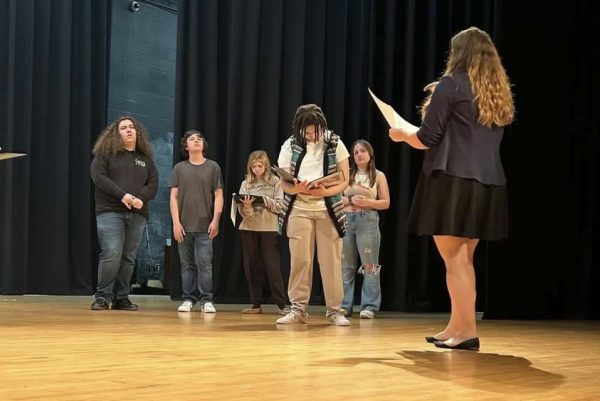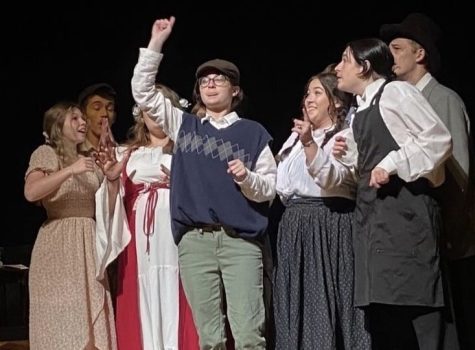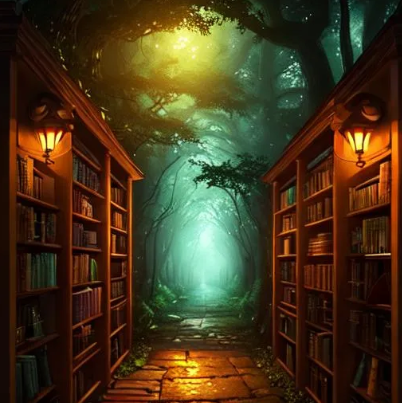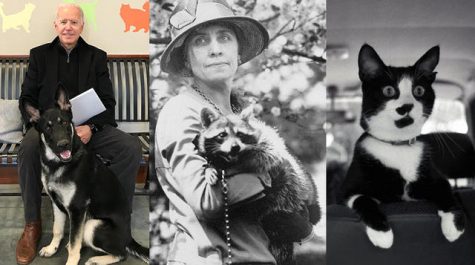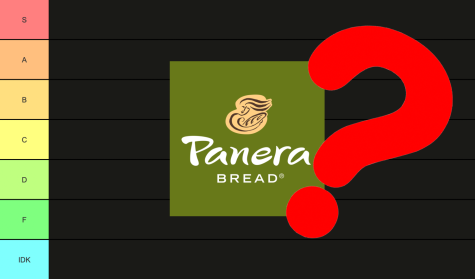Celebrating Christmas Around the World
In the Western world, candy canes, Christmas trees, and Santa Claus are all synonymous with Christmas. However, this popular holiday is celebrated differently in other countries. Let’s take a trip around the world and see how other people celebrate this cheerful holiday!

Argentina
In this South American country, most of the celebrations take place on Christmas Eve. They eat dinner at 10 or 11 pm, and some popular foods include roasted turkey or pork, vitel tone (slices of veal in an anchovy and tuna-based sauce), stuffed tomatoes, sandwiches, pudding, ice cream, pies, chocolate-covered raisins, and sugar-coated peanuts or almonds. At midnight, fireworks explode, and people release globos (paper decorations with lights inside; they are similar to Chinese lanterns) into the sky. People still exchange gifts, but it’s mostly between close friends and family.
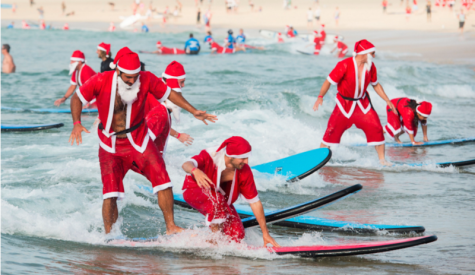
Australia
In Australia, Christmas is always warm, and several people go to the beach for the holidays. People decorate their houses with lights, and some have competitions with neighbors to see who has the best display. Several towns, cities, and schools host their own Carols by Candlelight service, a celebration in which people perform Christmas carols, including original Australian ones. There are also pageants, parades, and festivals. Children believe that when Santa gets to Australia, Santa gives his reindeers a rest, and he uses kangaroos instead. Kids leave carrots out for the reindeer and cake and cold beer (often non-alcoholic because he needs to drive) for Santa. Gifts are exchanged on Christmas Day. The day after, Australians celebrate Boxing Day, in which they visit friends and have barbecues on the beach.

Bangladesh
Although only 0.3% of the population is Christian (over 85% of the population is Muslim), Christmas is still a public holiday. It is known as “Borodin,” which means “big day” in Bengali. In larger cities, shops will have Western-style decorations, such as Christmas trees and artificial snow. Owning a Christmas tree is becoming more popular, as well as sending Christmas cards. Churches are decorated in a way called “Nishan” (“small flag”), which consists of hanging strings made of small, pink paper triangles. Following church service, everyone gathers together for a Christmas dinner at church; however, this tradition is mainly in rural cities. People eat chicken curries served with rice and vegetables, as well as “pitha” (sweet rice cakes made of rice flour, milk, coconut, and molasses) and “payesh” (rice pudding).
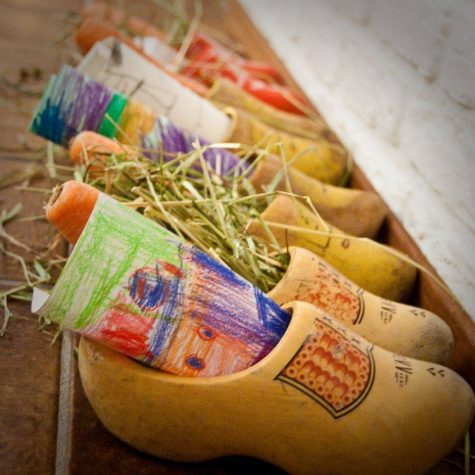
Belgium
Children believe that Sinterklaas/St. Niklaas brings them gifts on December 5 and 6, also known as St. Nicholas’ Eve and St. Nicholas’ Day. They leave their shoes in front of the fireplace, something for Sinterklaas (such as biscuits or drawings), carrots for his horse, and something for his assistant, Zwarte Piet (Black Peter). At night, Sinterklaas and Zwarte Piet arrives on the roof and slip down the chimney. Sinterklaas figures out if the child is naughty or nice. If nice, Zwarte Piet leaves presents in and around the shoes. If naughty, Zwarte Piet puts the child in his sack and brings him to Spain. Tangerines, gingerbreads, chocolate, and “mokjes” (letter-shaped cookies) for Sinterklaas. However, this holiday is separate from Christmas, which is more religious. On Christmas Eve, people partake in a feast. They drink “aperitif,” an alcoholic beverage, and “nibbles,” followed by seafood and stuffed turkey. For dessert, they enjoy “Kerststronk,” which is a chocolate log roll made of sponge cake and cream that is designed to look like the Yule log. Several people celebrate Advent with wreaths, candles, and calendars. People also give out presents, decorate their houses, and go ice skating. Foods such as “jenever” (gin), Glühwein (hot wine), Smoutebollen/oliebollen (deep fried sweet dumplings) are popular. Nativity scenes and Christmas trees are common, and a popular decoration is Santa climbing to the roof. Traditional breakfasts include freshly baked crusty rolls with butter, cold meats, or jam; “koffiekoek” (coffee cake); and “cougnou”/”cougnolle” (sweet bread that is shaped like baby Jesus). People visit friends and family, and movies like Home Alone, Disney movies, and Phantom of the Opera are shown on television.
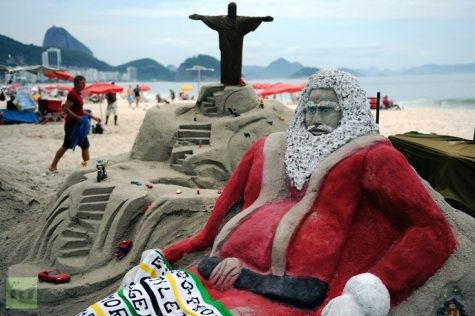
Brazil
Many Brazilian traditions come from Portugal. One of which are the Christmas plays called “Os Pastores” (The Shepherds), although the Latin American country has several additions, such as a woman who tries to steal baby Jesus. Nativity scenes are found in homes and churches. Most people go to a Midnight Mass called “Missa do Galo” (Mass of the Roster). Afterwards, there are firework displays and electric Christmas trees made of lights. Santa Claus is called “Papai Noel” and “Bom Velhinho” (Good Old Man), and children leaves socks out for him on Christmas; if he finds the sock, he’ll exchange it for a present. Secret Santa is very popular in Brazil, and some people even create a fake name to use. Brazil also takes part in “a 13th salary,” which is basically twice the salary for the month of December. This tradition is a way to boost the economy around Christmas. Popular Christmas foods include pork, turkey, ham, salads, and fresh and dried fruits. Everything is served with rice and raisins, as well as a spoonful of “farofa” (seasoned manioc flour). For dessert, they eat ice cream.
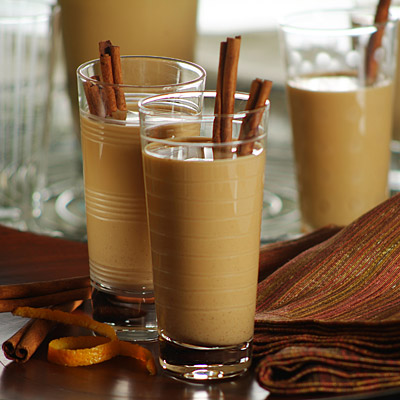
Chile
Because Christmas is in the summer for Chile, many people go to the beach for Christmas. People decorate their houses with lights and Christmas trees, as well as nativity scenes. On Christmas Eve, most families have a barbecue (an “asado”) with chicken, turkey, and pork. They also eat a cake called “Pan de Pascua.” They also drink “Cola de Mono,” a Christmas drink that consists of coffee, milk, liquor, cinnamon, and sugar. Afterwards, they go to a church service. Christmas Day is very relaxed and is spent with friends and family.
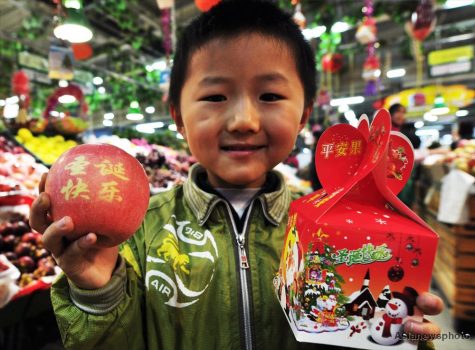
China
Only 1% of the population is Christian, so most people don’t know much about the holiday. As a result, it is celebrated mostly in big cities. In these cities, Christmas trees, lights, and decorations are used to adorn the streets and stores. Santa Claus is called “Shen Dan Lao Ren,” and he has grottos in shops around Europe and America, rather than in the North Pole. Most young people are celebrating, but it is treated like Valentine’s Day, as people give their significant others presents. Very few people have Christmas trees, as most are seen in malls and stores. If they do have one, it is a plastic tree decorated with paper chains, paper flowers, and paper lanterns. One tradition that is becoming more popular is the giving of apples! People give apples to friends, family, and loved ones, and stores will sell apples wrapped in colored paper.
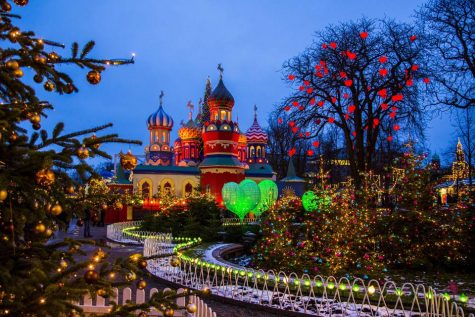
Denmark
In Denmark, many people celebrate Advent. There is even a popular tv show called “Julekalender” (Christmas calendar) with 24 episodes, and one episode should be watched from December 1 to Christmas Eve. The show is about someone trying to ruin Christmas and other characters continually saving it. Most people go to a church service as well, and it is a tradition to give animals a treat on Christmas Eve. People eat roast duck, goose, pork, sweet potatoes, red cabbage, beetroot, and cranberry jam/sauce. Most families also eat “risalamande,” a rice pudding made of milk, rice, vanilla, almonds, and whipped cream; however, all almonds are chopped except one, and whoever finds this almond receives a special gift, usually a marzipan pig. Children believe gifts come from the “Julemanden” (“Christmas Man”), who is similar to Santa Claus. He lives in Greenland, likes rice pudding, and has “nisser” as his helpers instead of elves.
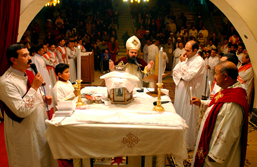
Egypt
Christmas is celebrated on January 7 in Egypt instead of December 25. The 15% of Christians belong to the Coptic Orthodox Church, and they follow multiple traditions. In the 43 days before Christmas, they fast, eating a vegan diet called the “Holy Nativity Fast.” On Coptic Christmas Eve, they go to a church service before eating a large feast consisting of meat, eggs, butter, and other foods they couldn’t previously eat. “Fata” is a popular soup made of bread, rice, garlic, and boiled lamb meat. On Coptic Christmas Day, friends and family gather together and present gifts. They also take “kahk” (sweet biscuits) with them to give as presents. Although only a small portion of the county is Christian, many people still celebrate it as a secular holiday, and they decorate their homes and shops with trees, lights, and decorations.

France
Nativity scenes are very common in France, and many of the figures are made out of clay. French scenes also include a baker, butcher, policeman, and priest. Yule Logs are made of cherry wood, and they are burned in many homes. Th log will often be sprinkled with red wine before burning, and it will be left burning all night in case Mary and baby Jesus come by. Santa Claus is known as “Père Noël,” and he is dressed in black; he may be the same person as Belgium’s Zwarte Piet. Their Christmas meal consists of roast turkeys with chestnuts, roast goose, oysters, foie gras, lobster, venison, cheese, and a chocolate sponge log cake called “Bûche de Noël.” In some parts of France, thirteen different desserts are eaten, and they are made from fruits, nuts, and pastries.
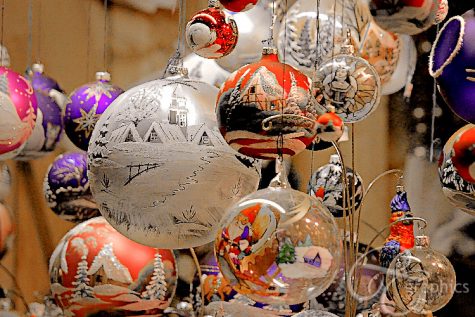
Germany
Advent is a very popular tradition, and there are several different calendars they use to celebrate, including wreaths with 24 boxes attached. Christmas trees are also significant, and if young children live in the house, the mother decorates the tree secretly. Wooden frames with plastic sheets are put in window to make them look decorative. Germany is especially known for their markets that sell decorations and food. Glass-blown ornaments are the most well-known, and they were originally hand-blown and shipped to the United States in the 1800s. On Christmas Eve, families read the Bible and sing Christmas carols, such as “O Tannenbaum,” “Ihr Kinderlein Kommet,” and “Stille Nacht.” Gifts are also exchanged on Christmas Even instead of Christmas Day. Germans also believe in the “Christkind,” a young girl with qualities similar to Jesus; a girl is chosen to dress like her for parades annually, and she wears a white and gold dress, blonde and curly hair, a gold crown, and sometimes wings. In some regions of Germany, a monster called “Knecht Ruprecht” or “Krampus” accompanies Santa, and he punishes the naughty children by scaring them. There is also a well-known legend of the Christmas Pickle, but this is a myth; Germans do not hang pickles from their trees to find.
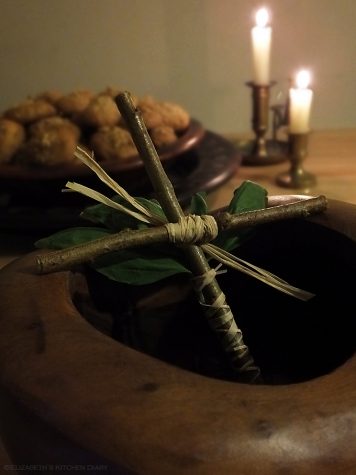
Greece
On Christmas Eve, children—mostly boys—sing Christmas carols (“kalanda”) in the streets, playing drums and triangles. They will also carry model boats decorated with nuts and painted gold, which is an old tradition. If people like their singing, the children will be given money, nuts, and candies. Another old tradition consists of a thin piece of wire on the rim of a shallow wooden bowl. A sprig of basil is wrapped around a wooden cross, which hangs from the wire. The water in the bowl helps the basil stay alive. Once a day, the mother of the house dips the basil-covered cross in holy water and sprinkles it around each room of the house. This tradition is meant to keep the “kallikantzaroi” (bad spirits) away that appear daily between Christmas (December 25) and Epiphany (January 6). Christmas trees are very popular, as well as boats decorations beside it. For dinner on Christmas Day, Greeks eat roasted lamb or pork, spinach and cheese pies, salads, and vegetables. For dessert, they enjoy “baklava” (a pastry made of filo dough, chopped nuts, and syrup or honey), “kataifi” (a pastry made of filo dough, nuts, and cinnamon), “theeples” (a fried pastry), and “melomakarono” (egg-shaped biscuits or cakes made from flour, olive oil, and honey and rolled in chopped walnuts). On January 1, Saint Basil (“Aghios Vassilis”) brings children presents. On January 6, people celebrate Epiphany and Jesus’ baptism, known as the “Blessing of the Waters”; men dive into cold rivers, lakes, and the sea as celebration.
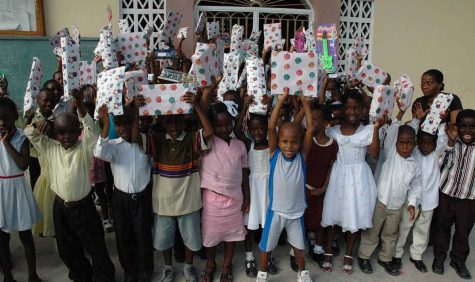
Haiti
Christmas trees are popular in Haiti, sometimes taking up most of the room. Nativity scenes are placed under the trees, and trees are decorated with ornaments. On Christmas Eve, children fill their shoes with straw and put them on the porch. Tonton Nwèl (Santa) will remove the straw and put presents in and around the shoes. Haitians drink “Anisette,” a slightly alcoholic drink made from soaking anise leaves in rum and sweetening it with sugar. However, due to the earthquake that left hundreds homeless, many people cannot celebrate Christmas like they used to.
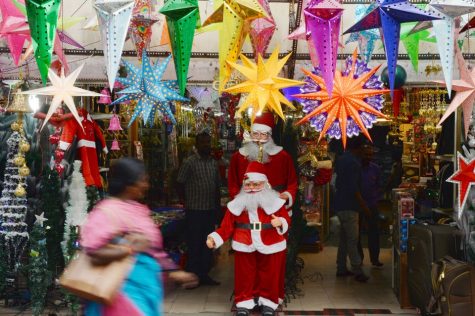
India
Roughly 2.3% of the population are Christian, so Christmas is a relatively small holiday. Many of the Christians go to Midnight Mass, and the churches are decorated with Poinsettias and candles. Although Indians have Christmas trees, they are not the traditional pine trees Westerners are used to; instead, they use mango trees or banana trees. In Southern India, they put oil-burning clay lamps on the roof of the house, which is supposed to represent that Jesus is the light of the world. Giant, star-shaped paper lanterns decorate the streets, and stars are seen in every house. Children believe that Santa Claus/Father Christmas delivers gifts using a horse and cart.
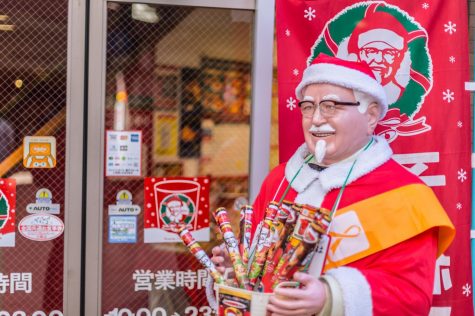
Japan
Christmas is a relatively new celebration for Japan. It isn’t even a national holiday. It is viewed as a way to spread cheer rather than a religious holiday. Christmas Eve is seen as romantic and is closer to Valentine’s Day. On this day, couples exchange gifts, walk around to look at lights, and eat at fancy restaurants. Fried chicken is very popular on Christmas Day, so people must schedule in advance to place orders at KFC. People also eat Christmas cake, a sponge cake with strawberries and whipped cream (The shortcake emoji [🍰] is actually a Japanese Christmas cake). Families like to go to Tokyo Disneyland to look at decorations—which are not religious, but rather romantic and cheerful.
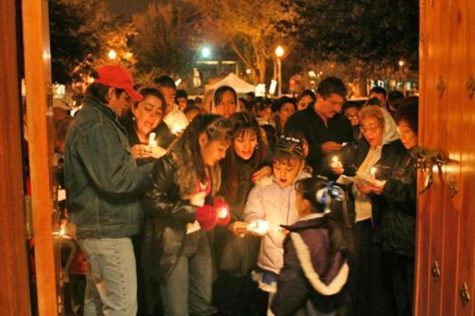
Mexico
In Mexico, Christmas is celebrated from December 12 to January 6. From December 16 to Christmas Eve, there are nine “Posadas” (Spanish for “inn”), which celebrate Mary and Joseph’s search for an inn in the Christmas story. In each Posada, children are given candles and wooden boards with clay figures of Mary and Joseph on it. The children walk around the streets with these objects, singing about this part of the Christmas story. They go to the homes of family and friends and ask if there is room. They are told there is no room in any given house before being told to keep looking. Eventually, one of the houses says there is room, and the children are welcomed inside for the posada party. There are food, games, fireworks, and prayers. Piñatas are also popular party games. On Christmas Eve, people eat “pozole” (a soup made with hominy, chicken or pork, chilies, and greens), roast turkey, roast pork, tamales, “bacalao” (salt cod), “romeritos” (a green vegetable that is cooked in mole sauce with potatoes and shrimps), and salads. For dessert, they eat “bunuelos” (fried pastries sprinkled with sugar and cinnamon). They often drink “ponche” (punch made with fruit) and “Rompope” (similar to egg nog, but with rum). In some states, kids expect Santa Claus on December 24, but in others, they expect him on January 6 on Epiphany.

Pakistan
Although December 25 is a national holiday, it celebrates Pakistan’s founder, Jinnah. There is only a small population of Christians in Pakistan, similar to the other countries in the Middle East. In large Christian cites, families decorate their houses with stars on the roof, Christmas trees, and cribs—even hosting crib competitions. The streets are decorated and lined with lights, and Christians sometimes give each other cakes. Carolers will sing and receive money, and that money will go to the churches. On Christmas, or “Bara Din,” they go to church and wear their best, most colorful clothes. They enjoy food—such as chicken or beef curry, rice, and a sweet dish—before spending the rest of the night with their families. Even the adults spend time with their parents.
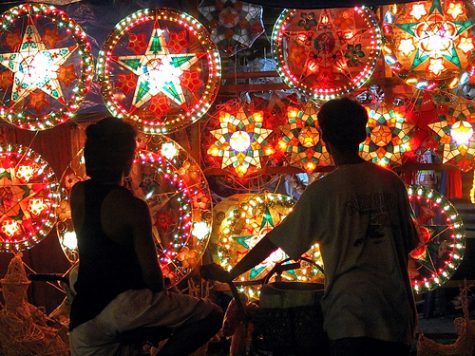
Philippines
Christmas is celebrated for months in the Philippines, with some shops playing Christmas music in September. Formal celebrations, however, begin on December 16 and continue until the first week of January for Epiphany. Most Filipinos are Christian, so they view Christmas as the most significant holiday of the year. They combine Western and traditional Filipino customs to make their Christmas special. Their Western decorations includes Christmas trees, carols, and cards. The most popular decoration is Filipino though, and it is called the “parol.” It is a bamboo pole or frame with a star lantern on it, which is made from colored paper. This is supposed to represent the star that guided the Wise Men. People stay up all night on Christmas Eve, going to church and a midnight feast called “Noche Buena.” At this celebration, family, friends, and neighbors gather together to eat “lechon” (roasted pig), ham, fruit salad, rice cakes, steamed rice, and several desserts.

Russia
Following the revolution in 1917, the Soviet Union banned Christmas as a religious holiday, and soon after, Christmas trees were also banned. However, in the 1990s, the Soviet Union collapsed, and Christmas was no long illegal. Yet, it is still a small holiday, as New Years is a more dramatic celebration. On New Year, it is believed that Grandfather Frost (or “Ded Moroz”) brings gifts to kids with his granddaughter, Snegurochka. On New Year’s Eve, children hold hands, circle the Christmas tree, and call for the grandfather or his granddaughter. However, people still enjoy feasts on Christmas Eve and Christmas Day. They eat “sochivo” or “kutia” (wheat or rice porridge with honey, poppy seeds, fruit, and chopped walnuts), “borsch” (beetroot soup), “solyanka” (vegetable pies made with cabbage, potato, or mushrooms), sauerkraut, porridge with fried onions and friend mushrooms, roast pork and goose, and potato or root vegetable salads. The meal usually has twelve dishes, which symbolize one for each of Jesus’ disciples. They drink a sweet drink called “Vzyar” (dried fruit and honey boiled in water) and enjoy fruit pies, gingerbread, honeybread cookies, fruit, and nuts for dessert.
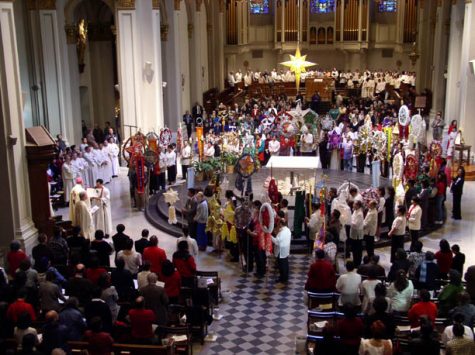
Spain
In Spain, people go to Midnight Mass or “La Misa Del Gallo” (The Mass of the Rooster) on Christmas Eve. However, before church, they enjoy a feast with their families. Although it is no longer commonly eaten, the traditional Spanish Christmas dinner was “Pavo Trufado de Navidad” (turkey stuffed with truffles [mushrooms]) or “Pularda asada” (roasted hen). Nowadays, people eat seafood, including lobsters, crabs, shellfish, and mollusks. For dessert, they enjoy “mazapán” (almonds, sugar, and eggs), “turron” (honey and toasted almonds), and “polvorones” (flour, butter, and sugar). After the service, an old tradition was to walk through the streets with torches, drums, guitars, and tambourines—making as much noise as possible. Children received presents on Christmas Day, but they are opened at Epiphany. Kids also believe that the Kings bring them gifts instead of Santa Claus. On Epiphany Eve, children leave shoes on the windowsills, on the balcony, or under the Christmas tree. They also provide a glass of Cognac, a satsuma, and some walnuts for the Kings. It is believed that the Kings fill the shoes with presents, but if they were bad, the Kings would leave pieces of coal made of sugar.

Zimbabwe
In this African country, people go to church before heading to all their friends’ and families’ houses to exchange gifts and party. They blast music and dress in their best (sometimes new) clothes for the parties. Only the main room is decorated, and there is usually a Christmas tree and ivy. People sing Christmas carols and provide Christmas cards; some of the cards are imported to have snowy scenes and the Christmas story on them, but other have wild animals and African landscapes on them. For dinner, they eat chicken with rice. Chicken is very expensive and is a luxury, so this is one of the few times people are able to eat this specific meat.
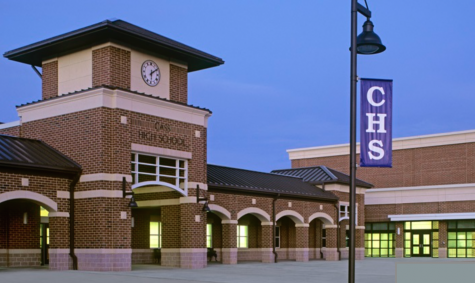
Cass High
At Cass, we have several students that come from different cultures. Although some have grown up in the United States their whole lives, other students moved here at a young age. Their Christmas traditions reflect their cultures.
Atisham Ajmal initially lived in the Middle East, and he moved to the United States in his early childhood. However, as a Muslim, he doesn’t celebrate Christmas. Yet, he enjoys to go against tradition sometimes and enjoy the cheer surrounding the holiday. “I celebrate Christmas by being all-around joyous this time of the year,” Ajmal states. “From the week of Halloween all the way up until about the second last week of January, this time of the year is my favorite time. Everyone is in such a happy and festive mood, and I’m in that type of mood 24/7. It’s also very cold, [and] I love the cold. [The lights are] all colorful and everything. During Christmas time, though my family doesn’t celebrate it, I love to go out to go see the lights and decorations.” Even though he doesn’t partake in the holiday, he appreciates the decorations and joyfulness behind it.
For Hinal Patel, she was born and raised in the United States, but her parents were born in India. Yet, they are Hindu and do not celebrate Christmas. Even though she and her family do not celebrate the religious aspects of the holiday, she still likes to celebrate. “The reason we started to do this is because as a child, my brother and I would see all these pretty decorations our neighbors would put up, so to keep us happy, our parents started to put decorations up as well,” Patel says. “My mom and I decorate the outside of our house with beautiful, bright Christmas lights, along with our Christmas tree in the living room.” She also goes to her best friend’s house for their dinner, and they play games, eat food, and exchange presents; this tradition has been going on for six years. Patel states, “I see Christmas as a time to spend quality time with friends and family.”
Leslee Chavez’s family is from Mexico. She is a Seventh-Day Adventist, a Christian denomination. As a result, she and her family believe in and celebrate the religious aspects of Christmas. For them, the holiday is all about Jesus Christ. However, she and her family save the fun and games for New Year’s. Chavez states, “During New Year’s, we all get together, and everybody makes a bunch of food. Usually, they make tamales and hot chocolate, and they bring pan dulce.” Her heritage and culture is seen in her food, while they bring in American traditions to their games. Her family likes to participate in a White Elephant or a Secret Santa, but usually, it’s the latter. Even if her Christmas doesn’t involve a lot of cheer, she still finds ways to pack her holidays full of decorations and joy all around.
People celebrate Christmas in so many different ways, and it’s so interesting to see how unique everyone’s cultures are. Whether you sprinkle water from basil leaves around each room or if you use beautiful paper lanterns to decorate your house, Christmas is so much fun, and everyone has a good time, regardless of the traditions.







